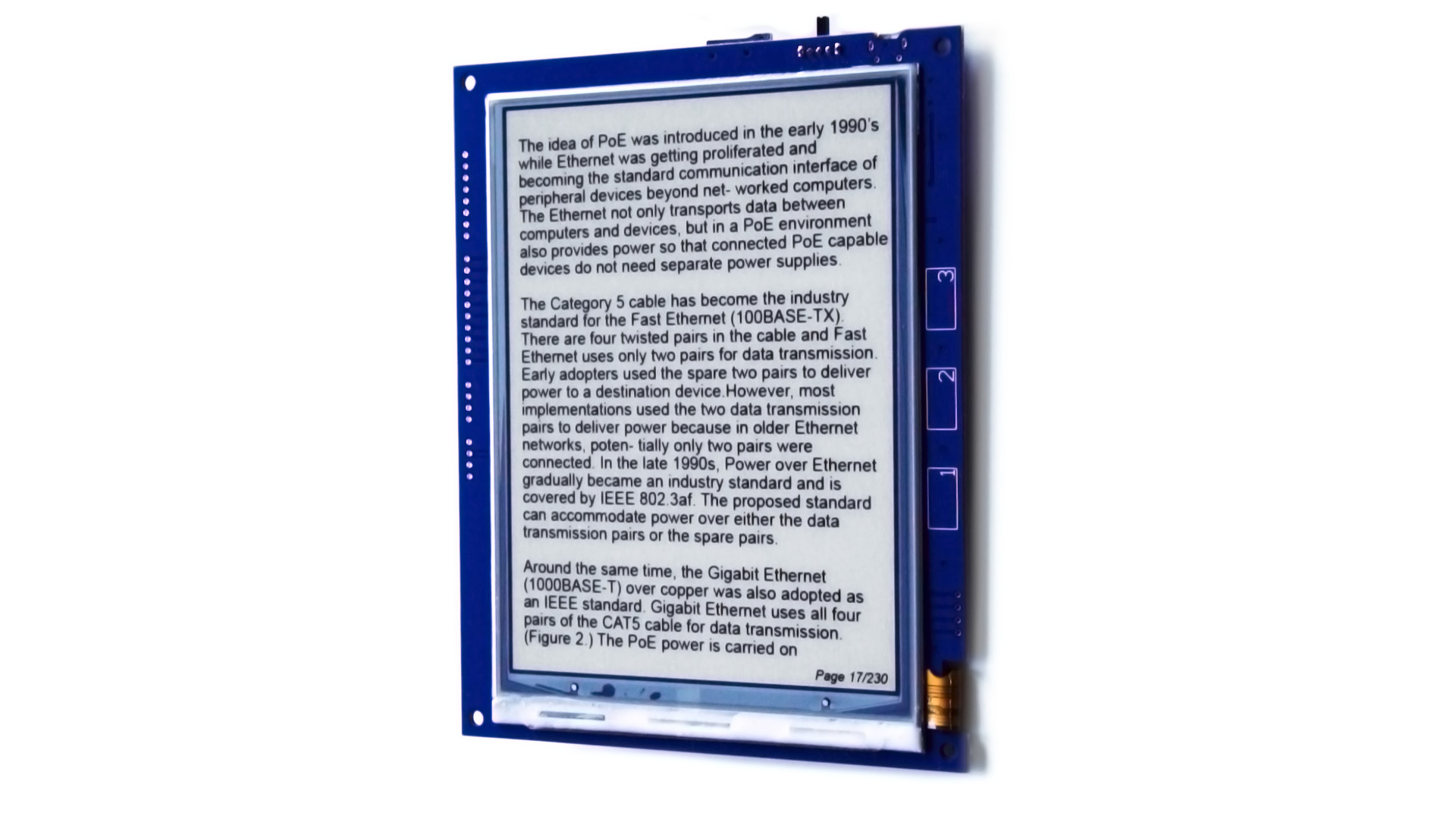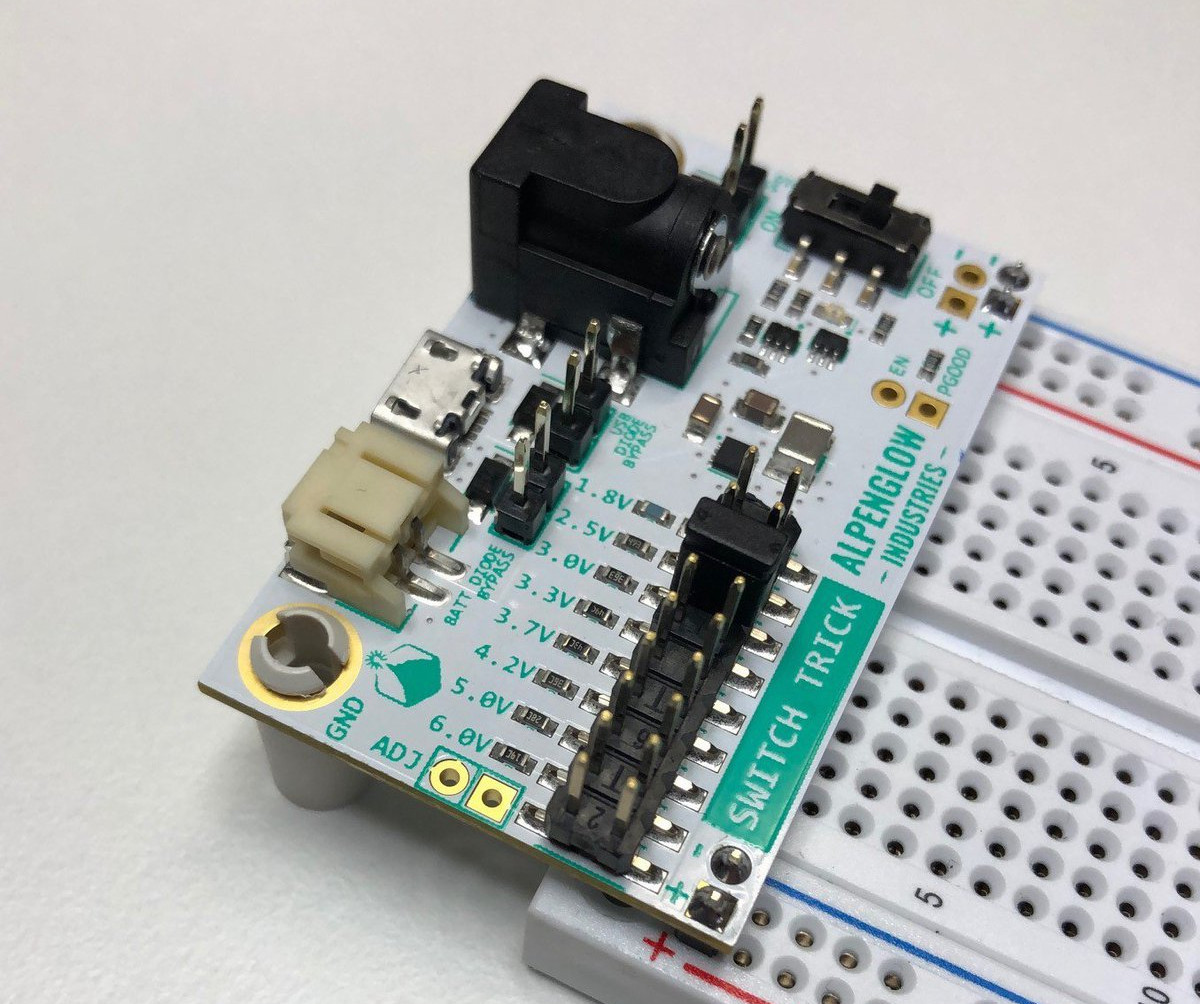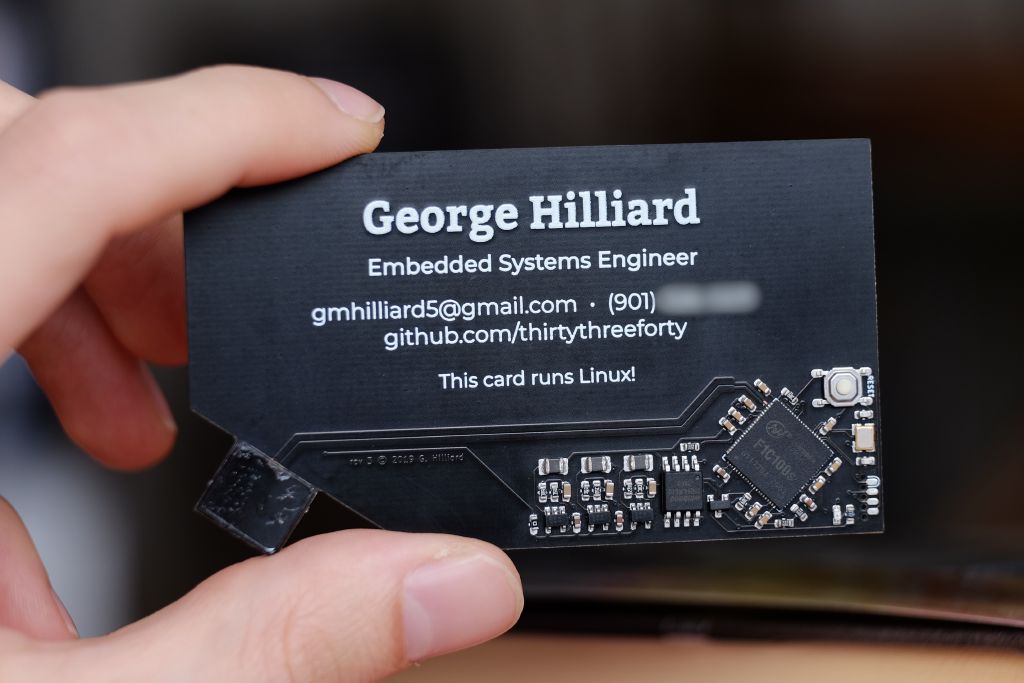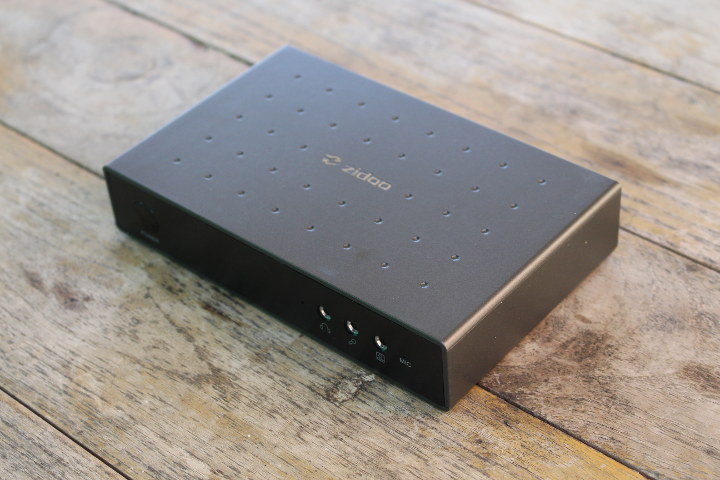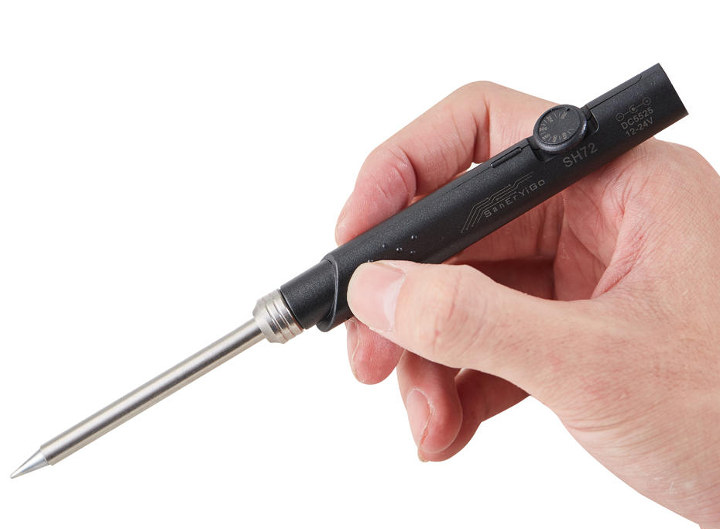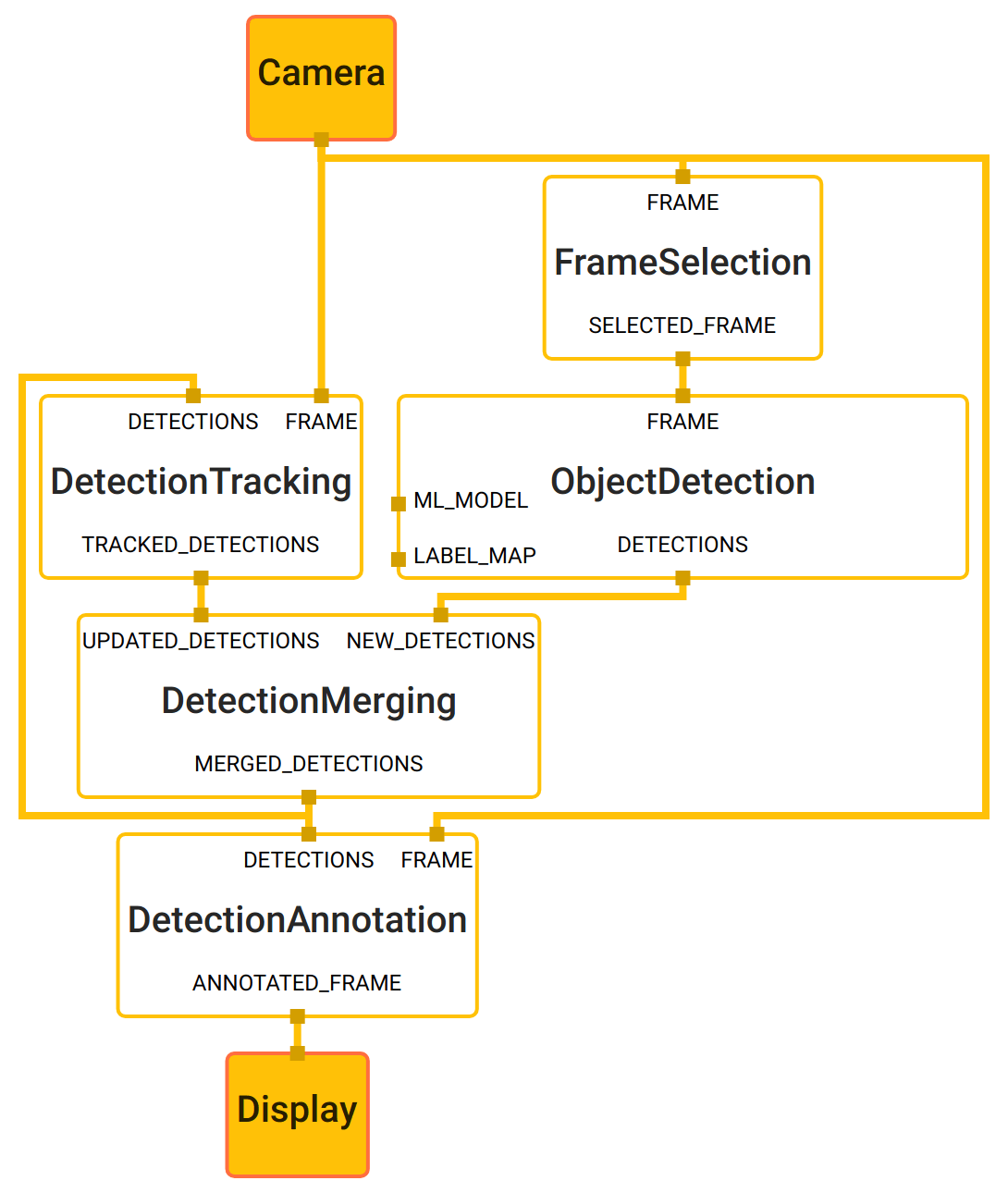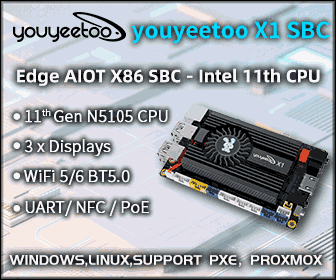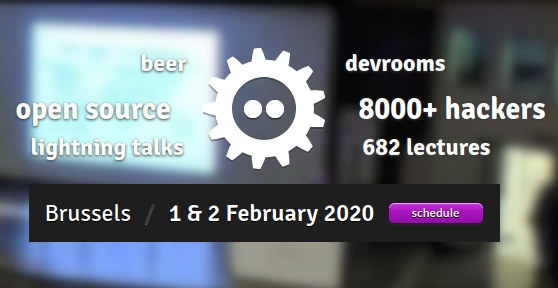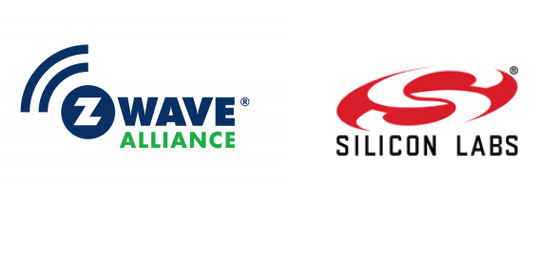Inkplate 6 wireless display is made from recycled e-Paper display taken from a used Amazon Kindle E-reader and adds WiFi (and Bluetooth) connectivity thanks to an ESP32-WROVER module featuring Espressif Systems ESP32 dual-core processor. The 6″ e-Paper display can easily be updated over WiFi, and used for a variety of applications or projects such as high-latency digital signage displays, collaborative task trackers, e-Paper typewriters, open-hardware E-readers, art projects and so on. Inkplate 6 specifications: ESP32-WROVER wireless module ESP32 dual-core Tensilica LX6 processor @ 240 MHz 8MB RAM, 4MB flash Connectivity – 802.11 b/g/n WiFi and Bluetooth 4.2 Display – 6″ e-Paper Display (ED060SC7) with 800×600 resolution taken from discarded Kindle readers; refresh time: 0.264 s; partial updates possible Storage – MicroSD card socket USB – 1x Micro USB Port for power and programming (via CH340C) Expansion EasyC / Qwiic connector with I2C Headers for power signals, I2C, SPI, ESP32’s GPIO, […]
SwitchTrick Switching Power Supply Board Helps you Test your Breadboard Circuit
We’ve covered several power supplies for breadboards over the years including toaster breadboard power supply with variable voltage output, or the portable, battery-powered MEGO power supply that allows you to power your project on the go. The SwitchTrick is another one of those breadboard power supplies but with testing in mind, as it takes input from various sources, and with jumper selection for voltage from 1.8V to 6V allows you to easily simulate different battery voltage levels, or the test the overvoltage protection of your circuit for example. SwitchTrick key features and specifications: Step-down converter – TI TPS62160 3-17V step down-convertor adjustable from 0.9-6V out at 1A. Power Input – 3V to 17V via 5.5×2.1mm power jack for 9V battery or wall supply Micro USB connector for 5V 2-pin JSY PH connector for battery 2x large plates holes for alligator clips Power Output (selectable by a jumper) 1.8V 2.5V 3.0V […]
This Business Card is a $3 Linux Computer Powered by Allwinner F1C100s SoC
The smallest, thinnest Linux computer There are many business card-sized SBCs, like RPi 4. But George Hillard, an embedded systems engineer decided it would be interesting to build an actual business card that was a computer. His card runs Linux and houses an Allwinner F1C100s carrying an ARM9 processor with 32MB RAM and 8MB flash storage. The Basics It holds some of his photos, a copy of his resume and a couple of games, which is pretty good for something like a business card. There is a USB port off one corner, and the unit can connect to a computer and boot up in about 6 seconds and shows up under USB as a flash drive. But that piggybacked computer-attached display is really the only type of display the card can manage. The Shell and Linux Version The shell has the games, including a version of 2048, and a small […]
Zidoo M9 Mini PC Review – Part 1: Unboxing & Teardown
Over the years, Zidoo has made TV boxes for the consumer market, and digital signage players for businesses. The recently announced Zidoo M9 aims at both markets, plus other applications such as IoT, robotics, and artificial intelligence. Zidoo M9 is either sold as a board or a complete TV box reference design with a case, as it exposes all the usual ports of a TV with HDMI, USB, and Ethernet. But you can do more with internal connectors for cameras, PCIe interfaces, SIM card slot, MPI DSI and eDP connectors, and so on. The company has sent me a review sample, so let’s first check out the accessories provided with the box, and have a look into the hardware design today, before testing the Android firmware in the second part of the review. Zidoo M9 Unboxing The package makes it clear Zidoo M9 “mini PC” looks like a TV box, […]
SH72 Soldering Iron Looks Similar to TS100, Sells for around $10
TS100 is a popular soldering iron in the shape of a pen, and whose temperature is controlled by an STM32 microcontroller. Parameters such as temperature, temperature steps, sleep time and others can be setup over USB, and the soldering is powered by a standard 19V power supply often used with laptops. TS100 sells for around $50, while the more recent USB-C powered version (TS80) sells for a little over $70. But a new model that looks similar to TS100 minus the OLED display is now selling for around $10 on Banggood. SH72 soldering iron features and specifications: Temperature range – 220-400℃ Temperature control knob Available/supported tips – SH-B2/SH-BC2/SH-C4/SH-D24/SH-I/SH-K/SH-Ku (Hakko types) Power Supply 12-24V DC input up to 65 Watts via 5.5 x 2.5 mm barrel jack Modes of operation – 12V >=1.5A (18W); 16V >=2A (32W); 19V >=2.1A (40W); 24V >=2.7A (65W) Dimensions Control handle – 110 x 16 x […]
MediaPipe is an Open Source Perception Pipeline Framework Developed by Google
MediaPipe is an open-source perception pipeline framework introduced by Google, which helps to build multi-modal machine learning pipelines. A developer can build a prototype, without really getting into writing machine learning algorithms and models, by using existing components. This framework can be used for various vision & media processing applications (especially in VR) such as Object Detection, Face Detection, Hand Tacking, Multi-hand Tracking and Hair Segmentation. MediaPipe supports various hardware and operating system platforms such as Android, iOS & Linux by offering API’s in C++, Java, Objective-c, etc. And this framework also capable of utilizing GPU resources. MediaPipe Components The framework is comprised of three major components A framework for inference from the pipeline data Tools for evaluation And a collection of reusable inference and processing components It follows the approach of Graph-based frameworks in OpenCV and all processing happens with the context of the Graph. The Graph contains a […]
Some Interesting Talks from FOSDEM 2020 Schedule
We wrote about IoT devroom call for proposals for FOSDEM 2020 a little while ago, and as the free open-source developer meetup is getting closer, FOSDEM 2020 organizers released the schedule. So I’ll look at some of the talks in the relevant devrooms such as the Internet of Things, hardware enablement, Embedded, Mobile and Automotive, as well as RISC-V and others to compose my own little virtual schedule for the 2-day event. Saturday, February 1 10:30 – 10:50 – How lowRISC made its Ibex RISC-V CPU core faster – Using open source tools to improve an open-source core – by Greg Chadwick Ibex implements RISC-V 32-bit I/E MC M-Mode, U-Mode, and PMP. It uses an in-order 2 stage pipe and is best suited for area and power-sensitive rather than high-performance applications. However, there is scope for meaningful performance gains without major impact to power or area. This talk describes work […]
Z-Wave Open Standard to Enable Third-Party Z-Wave Silicon and Stack Suppliers
Roughly one year ago, Silicon Labs released a publicly available Z-Wave SDK and a Raspberry Pi 3 Image to make it easier to work with the wireless protocol targetting home automation. But Z-Wave specifications were still closed, which meant Z-Wave chips could only be purchased from Silicon Labs, a bit like LoRa chip can only be purchased from Semtech. The advantage of being closed is that you’re the only supplier, but this will limit market adoption, and customers may be wary of relying on a single partner for their long term plans. That must be why The Z-Wave Alliance and Silicon Labs have now decided to open Z-Wave specifications to Silicon and Stack suppliers. That paves the way to third-party software platforms and Z-Wave radios from some of the 700+ companies which are members of the Z-Wave Alliance. The Z-Wave specification release is scheduled for H2 2020, and will include […]


